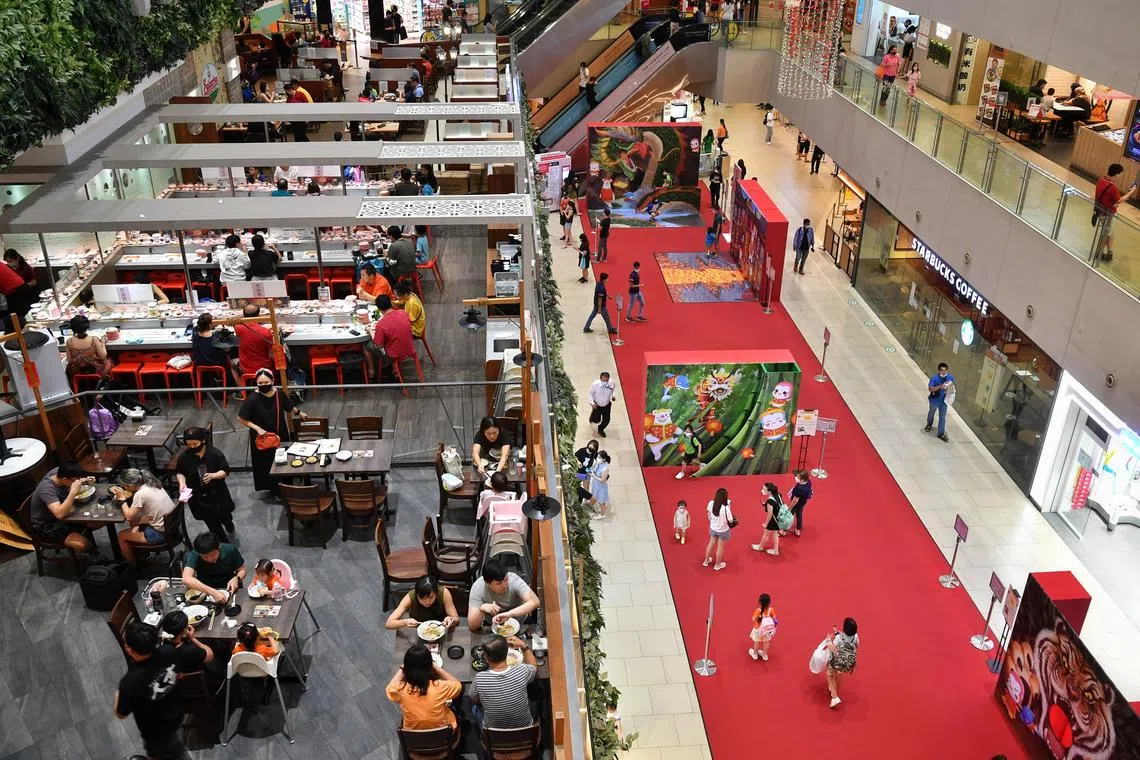S’pore retail sales dip 0.8% in January, marking first drop in nearly a year
Sign up now: Get ST's newsletters delivered to your inbox

Retail sales dipped 0.8 per cent in January year on year, reversing the revised 7.7 per cent increase in December.
ST PHOTO: CHONG JUN LIANG
Follow topic:
SINGAPORE – Takings at the till fell in January amid a slump in motor vehicle sales and as consumers snapped up fewer big-ticket furniture and household equipment.
Analysts say the outlook remains uncertain even as tourism could help to lift retail sales.
Retail sales dipped 0.8 per cent in January year on year, reversing the revised 7.7 per cent increase in December
The last time sales fell was in February 2022, when it slid 3.5 per cent due to the timing of Chinese New Year as consumers did their pre-festive shopping earlier.
ING senior economist Nicholas Mapa said the latest big miss highlights some of the challenges to Singapore’s growth outlook in 2023.
“The sustained influx of overseas visitors is likely giving retail sales a boost but this appears to have not been enough to offset the negative impact of surging prices... Retail sales had been a bright spot of late but it now joins non-oil domestic exports in contraction territory,” he said.
RHB senior economist Barnabas Gan expects domestic demand to stay soft, especially in the first half of the year, as the consumers’ rush to buy goods ahead of the GST hike dissipates and economic growth slows. “Retail sales growth had been robust in 2022, suggesting that 2023’s growth must contend with the high base prints,” added Mr Gan. His bank estimates that retail sales will grow by 6 per cent on the whole in 2023.
However, this year’s Budget support measures will cushion some of the slowdown in demand from rising inflation and the GST hike, while tourism might also help to buoy Singapore’s retail sales as China reopens its borders, he added.
UOB senior economist Alvin Liew said retailers here will get a boost from the tight domestic labour market, which contributes to consumption, and the return of major events such as sports, concerts, business travel and Mice (meetings, incentives, conventions and exhibitions) activities.
China’s reopening will also boost travel- and tourism-related sectors, including retail, but it did not make a mark in January. This was possibly due to limited flights and the proximity to the Chinese New Year period, which deterred travel outside of China, he added. “We expect to see a significant influx of Chinese tourists and their related spending in the subsequent months,” said Mr Liew, whose bank expects retail sales to grow by 5 per cent in 2023.
He nonetheless noted risks such as inflation pressures that remain elevated and might increasingly curb households’ discretionary spending, as well as the recent GST hike.
Excluding motor vehicles, January’s retail sales rose 2.1 per cent, cooling from the 9.8 per cent increase in December.
Overall takings fell 9.4 per cent from December on a seasonally adjusted basis. This compares with a 1.3 per cent increase from November to December.
Retail sales still grew for many categories in January, buoyed by spending for Chinese New Year, compared with a year ago. Food and alcohol saw the largest increase of 36.3 per cent, followed by apparel and footwear, which rose 23.7 per cent. However, motor vehicle sales tumbled 23.5 per cent due to lower certificate of entitlement quotas, while sales of furniture and household equipment dipped 13.5 per cent amid lower demand.
Overall, the estimated total retail sales value in January was $4.2 billion, of which online sales made up about 11.5 per cent, lower than the 13 per cent recorded in December.
While retail sales fell in January, takings of F&B services grew at a faster pace. They rose 21.8 per cent year on year, extending the 13.9 per cent increase in December.
All industries in the F&B sector recorded growth in sales, with food caterers seeing the largest increase of 110.2 per cent amid higher demand for event and in-flight catering. Turnover of fast-food outlets, restaurants, cafes, foodcourts and other eating places rose between 11.5 per cent and 21.7 per cent.


